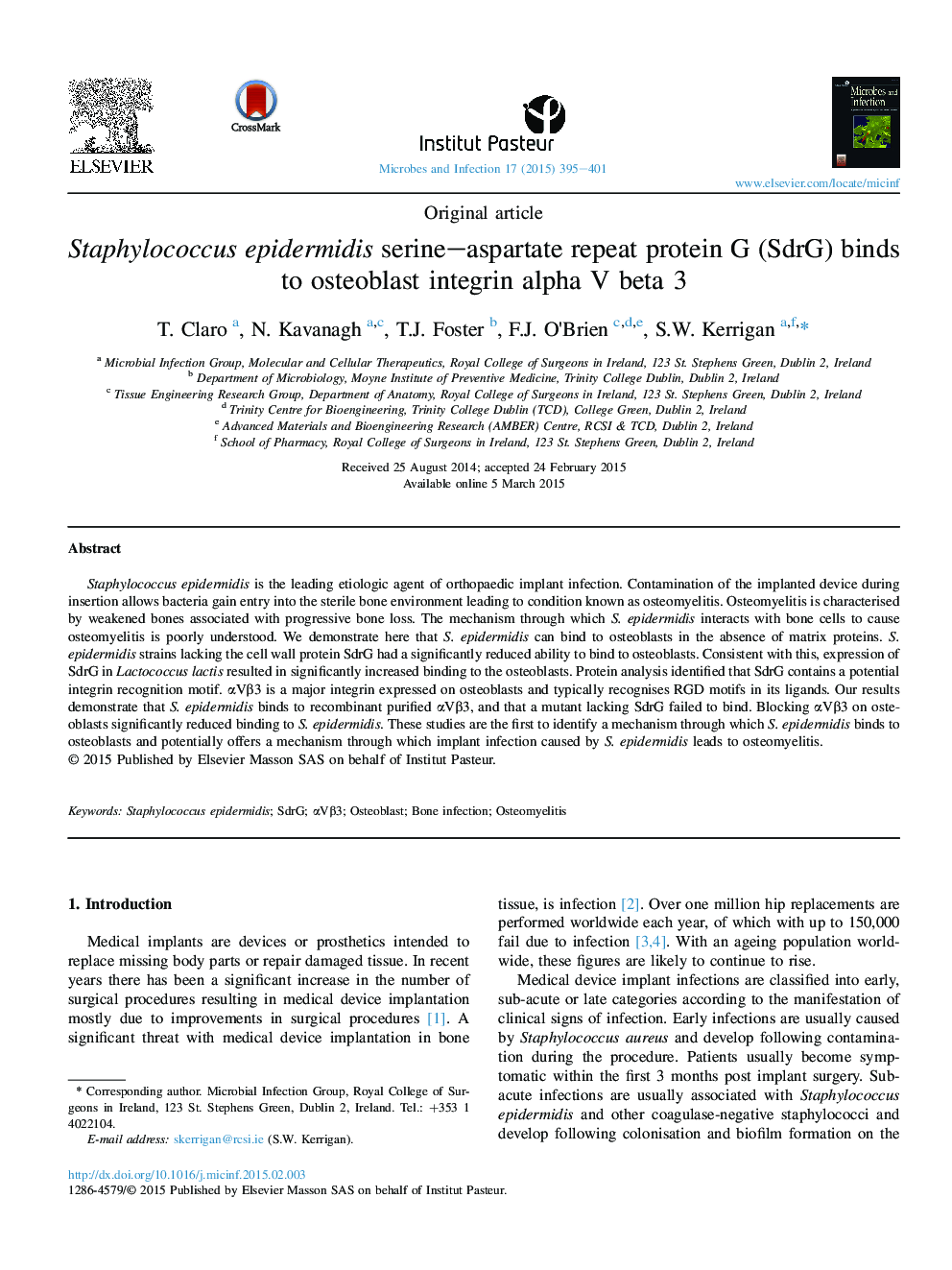| Article ID | Journal | Published Year | Pages | File Type |
|---|---|---|---|---|
| 6135655 | Microbes and Infection | 2015 | 7 Pages |
Abstract
Staphylococcus epidermidis is the leading etiologic agent of orthopaedic implant infection. Contamination of the implanted device during insertion allows bacteria gain entry into the sterile bone environment leading to condition known as osteomyelitis. Osteomyelitis is characterised by weakened bones associated with progressive bone loss. The mechanism through which S. epidermidis interacts with bone cells to cause osteomyelitis is poorly understood. We demonstrate here that S. epidermidis can bind to osteoblasts in the absence of matrix proteins. S. epidermidis strains lacking the cell wall protein SdrG had a significantly reduced ability to bind to osteoblasts. Consistent with this, expression of SdrG in Lactococcus lactis resulted in significantly increased binding to the osteoblasts. Protein analysis identified that SdrG contains a potential integrin recognition motif. αVβ3 is a major integrin expressed on osteoblasts and typically recognises RGD motifs in its ligands. Our results demonstrate that S. epidermidis binds to recombinant purified αVβ3, and that a mutant lacking SdrG failed to bind. Blocking αVβ3 on osteoblasts significantly reduced binding to S. epidermidis. These studies are the first to identify a mechanism through which S. epidermidis binds to osteoblasts and potentially offers a mechanism through which implant infection caused by S. epidermidis leads to osteomyelitis.
Related Topics
Life Sciences
Immunology and Microbiology
Immunology
Authors
T. Claro, N. Kavanagh, T.J. Foster, F.J. O'Brien, S.W. Kerrigan,
